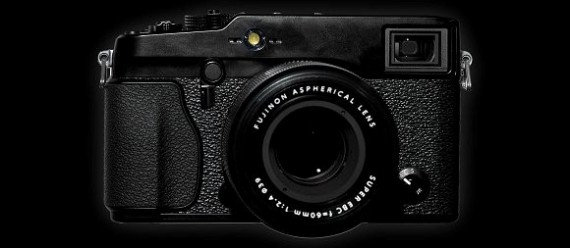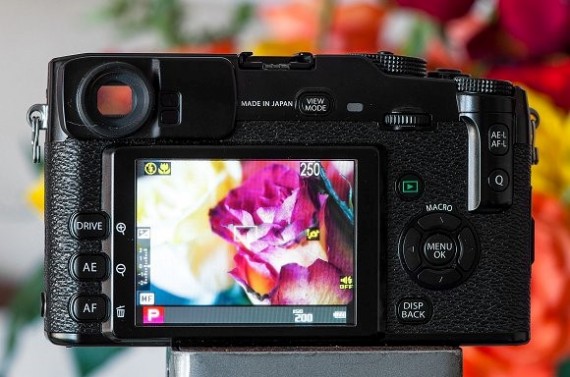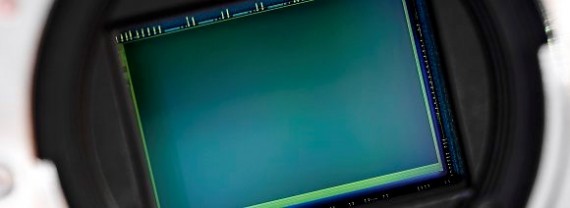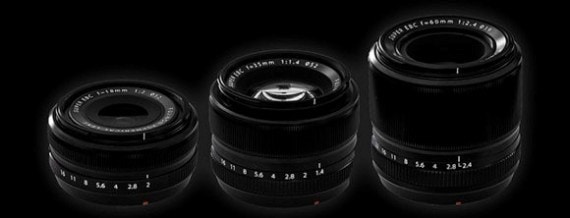– This Review is written and compiled by John Fox
I have been given the Fujifilm X-Pro1 to play with. And Play I have. It is a very interesting camera and very different from what I am used to, it is a bold design that is hard to ignore as it is very different from other digital cameras available. It is retro styled and reminiscent of the rangefinder cameras we grew up with. It is a mirrorless camera which has a 16.3 megapixels APS-C CMOS sensor, with interchangeable lenses. Okay, fair enough but why?

I was very puzzled by this camera and did not know what to make of it. Playing with the camera straight out the box caused certain judgments and assumptions to form which I knew only shooting with it would confirm or dispel. So I read through the manual, (cause I am weird like that) and went out shooting in the countryside. Having familiarized myself with the primary buttons and functions I found the camera really easy to understand. The layout is relatively intuitive and the quick menu is easy to operate.
I shoot all day, every day with a DSLR, so there is a certain novelty factor in using a camera with either the LCD or the viewfinder window for framing up. I found that for general shooting the LCD was quite sufficient even in bright sunlight, when I wanted a very specific and controlled framing I instinctively pulled the viewfinder window up to my eye. This is the coolest feature of this camera! The viewfinder window makes you feel like the bionic man. The camera senses your eye is over the little window and switches between two different modes. It can be used as an optical viewfinder, which is the standard off-centre viewing window with a wide and distorted view in the direction the camera is pointing. But it has the camera’s information overlaid much like a heads-up display. The eyepiece arrangement is very reminiscent of the disposable Fujifilm cameras and one automatically expects the same kind of experience. Thus making the second viewfinder option all the more surprising. The viewfinder is also capable of switching to an electronic viewfinder which gives a through-the-lens view of the scene.

This is very similar to what is offered by a DSLR, the difference here is you can cycle between views and this makes you feel like Steve Austin, the six million dollar man with bionic eyes. It is a small thing I know but it amused me endlessly. The result of these options is that you have a bit of flexibility in your framing approach and this promotes a bit of creativity in your shooting.
The camera seems solid enough and should be “hardwearing” enough to withstand the sort of punishment cameras get subjected to. The buttons are relatively well laid out unless you have gloves making your fingers fat, then I think you will find you are inadvertently turning on the quick menu every 2 seconds. One oddity for me is that the shutter dial has a lock function so you don’t accidentally change it. There is a second dial for exposure compensation which is a great feature, but the dial overlaps the body and I often found it in the wrong position. Why is it that the dial that can’t be bumped into the wrong position has a lock function when the dial that gets fumbled all the time can’t lock?

This camera is categorized as a “Rangefinder-style Mirrorless” body type. While there are not many other cameras in this category at present, the mirrorless line-up is growing very quickly. The camera also won the TIPA award in the class “Best CSC Professional” so it has that going for it. It is hard to guess who it was up against as it appears to be in a new category of its own. As this is an interchangeable lens camera and is mirrorless, when the lens is removed the sensor is open and exposed to the world and all the hazards of dust and scratches and birds flying overhead. I am not used to seeing the sensor so often and I must say it makes me very nervous. It pays to check the sensor each lens change as editing becomes very tiresome if you are removing dust from every image. Having said that, it is a very big sensor and this has given it very good low light capabilities. In fact, it has impressed many people with its ability to handle noise in poor lighting. This is useful as the little icon telling me my shutter speed is so low that I am at risk of motion blur comes on quite often. This is a camera that you can push the ISO up on without adversely affecting your images. The auto ISO function was a bit of a let-down as the “motion blur warning” is still popping up as the camera keeps to the low shutter speed choices in auto.

At the moment, there are only three lenses currently available with more scheduled for release in 2013. The lenses that are available are all primes, 18mm, 35mm and a 60mm and are of very high quality. They do however appear to be quite unresponsive in manual focusing mode. They wind and wind with little effect on changing the focus. It takes many revolutions to move through the range of focus. This camera has auto focus unlike the Leica, it is however not a perfect system. The auto focus lets me down more than once and sometimes completely fell apart in certain situations where it could not find focus. Normally if the camera struggles I flick to manual and carry on. With this camera as I have mentioned, manual focus can be quite a time consuming and is not a quick fix.

Once you have a sharp focus and the shutter button is half depressed the camera is quite responsive. I did not experience shutter lag. I was trying to get this bird as he left his perch and then a second bird took off and I managed to grab the frame as I was already setup for this shot. That is not to say I would suggest you use this for sports photography but if the focus is pre-set the camera will fire very responsively. You can’t use burst mode (6fps) on a moving subject with the autofocus as it just won’t cope, and you can’t use it for manual focus because you just won’t cope. You need to pick the appropriate subject matter for this camera for it to perform at its best.
One function I appreciated was that there is a dedicated macro button. This tells the camera you are trying to shoot at close distances. This is something I end up doing quite often so it was great that the process is very easy to put into effect. The 60mm prime is a macro lens and the camera is capable of producing a shallow depth of field which can enhance the beauty of your images by softening the backgrounds. This is something these small sensor cameras fall short on, which is the ability to knock out the background. This 60mm in macro can make very soft and smooth bokeh indeed.

A novel feature the camera offers is film simulation. You can choose from a variety of different film looks and this gets applied to your images. There is also film simulation bracketing where you can take one image and have three film looks applied to that shot. For me that function will seldom move from the Velvia effect as it best suites my subject matter and preference of contrast and saturated nature photos. I would love these colour profiles loaded into Lightroom so they could be applied to the RAW images from within the Camera Profile drop down menu.

When all is said and done it is only the image results that matter. I can tell you that this camera gives very, very good results. The images are sharp, clean and vibrant. I have shot mostly in RAW and then processed the images in Lightroom. I like to see how much latitude the files hold for flexibility in editing. It produces good JPEGS and good RAW files with plenty of potentials to draw from them the information stored within. The camera has a good sensor and quality lenses with results that should please the buyer. Which begs the question, who should buy this camera? This sort of format is very popular for street photography. The camera is small and unobtrusive without the intimidation factor of a DSLR. You can shoot on the street without drawing too much attention or changing the behaviour of the people around you who become very aware and self-conscious at the sight of a kitted out DSLR. The low light abilities will help in these situations while the focusing may hinder.
A second space this camera may hold some value is for new photographers trying to better their skills. I say this because the camera has a very “hands on” and direct physical approach to dialing in chosen settings. The shutter selection is a wheel where all the shutter speed choices are visible; this gives a very immediate and direct way of correlating the setting you have chosen and the image that results. As you cycle through the options and play with the camera you will learn very quickly the effect shutter has on photographs. There is also the choice of “A” where the camera will take care of everything for you. All this is true of the aperture ring on the lens as well. The use of dials to “dial in” settings is a great learning tool as you can take as much or as little control over the images as you want. This direct approach is how most of learnt on film cameras, which were almost purely mechanical in their makeup. The advantage digital offers is a cheap and immediate view of the result, which makes the learning process much faster.

I always like having an alternate smaller lighter camera with me when I am on vacation. Sometimes it is just inconvenient to carry a DSLR everywhere and you just want a bit of a break from viewing your island destination through a viewfinder. On the other hand, you don’t want to miss the greatest photo opportunity the world has to offer and your camera is in the hotel room. So you want something small, light and inconspicuous but without sacrificing image quality for the award winning shot waiting around the next corner. When I first looked at this camera I thought this was the bracket it would fall under. But it does not make much sense as a secondary camera as you will end up carrying as much kit with you as your DSLR. It has no build in flash, so you will need to carry one. It only has prime lenses available so you need to carry the set of three if you want any versatility. Also, spare batteries will be helpful as the LCD runs live view all the time the camera is on, as it is the primary viewfinder. All in all packing this camera does not offer much in the way of saving space as you need to pack so much paraphernalia to get the full benefit of the format.
Perhaps then it is best suited as a primary camera? Well, this camera’s recommended retail price is R19, 000.00. I thought this was a typo until I found it on B&H for USD 1, 699 body only. For that price you could own the Canon 7D with a 28-135mm lens or if you prefer Nikon get yourself a Nikon D7000 with 18-105mm with R 2, 500 in change to take the family to Gold Reef City for the day. I struggle to see why I would choose this camera over either of the two alternatives I mentioned. It would appear that the camera has been well received in the photography world in general as it is capable of very good results. There is even anticipation for its predecessor as some of the quirks I have mentioned will be worked out in future models. I personally can’t justify the price tag with the alternatives available that will be better suited to fill a particular need over this camera which falls into a category where it is the only candidate. Unless of course the category is “Rangefinder Digital” then it is direct competition to the Leica M9. In which case this is a bargain and you should buy two!


Update:
Well, good news for fans of the X-pro1! There is a software update which addresses the autofocus problems of the camera. Most impressively this corrects the cameras auto focus as well as the manual focus issue I discussed. This for me was a major flaw and I am very pleased it is something that was easily solved by an update. For a full breakdown of the benefits gained by updating the firmware follow this link to the dpreview site.
https://www.dpreview.com/news/2012/09/19/Fujifilm-releases-Firmware2-for-X-Pro1-and-lenses
About John Fox…
John is a professional photographer and holds a diploma in film and video technology. John have been teaching photography for four years at a Tertiary institution and now working with DPC as a teacher and assist with development of specialist course materials



I have just added an update at the bottom of the article as my major concerns and reservations of the camera have been addressed in the updated firmware “2”. There is also a link for a full unpacking of the changes.
You cannot compare X-Pro 1 with 5D, 5DII or 5DII in one area and that is the shallower DOF. That’s is the disadvantage with APS-C trying to isolate your subject. For street shooting with zone focusing, any DSLR or analog rangefinder is far better than X-Pro 1 even with the newer firmware as that has not been addressed.
I have a Canon 5D MK3.
I have the following lenses for it:
16-35 F/2.8 II, 70-200 F/2.8 II, 50 F/1.2, 40mm F/2.8, 50 F/1.8.
I have also just recently purchased but returned 35mm F/1.4L and 24mm F/1.4 II.
I also have a Fuji X-Pro 1 with the 18mm and 35mm lenses.
Most Canon fan boys will not like hearing this, but I prefer the Fuji.
With the 35mm F/1.4, there is nothing available from Canon that I have tried that is as sharp.
I regularly post images on 500px.com and most of my 80+ pulse shots, including a recent one at 97, have been shot hand held in natural light with the Fuji.
The forthcoming firmware update 2.0 should cure all the gripes related to auto focus and recognize Fuji as a serious competitor to bulky established DSLRs.
I’m considering selling all my Canon gear and buying a Leica M10 – I love the Fuji and this style of photography so much.
Kudos to Fuji for doing something completely different with the X-Trans sensor and bringing out the new XE-1 for $1000.
ET
My Fuji X-Pro1 body and 3 lenses + 2 batteries + the little flash take up so much less space then my 5D Mk2 with extra lenses and a flash. And weighs so much more less! It’s all in one tiny bag I can throw over my shoulder or into my messenger bag (when bike riding) and I hardly know it’s there.
That is the reason I bout the kit. Well that and it’s super fun to shoot with and is sexy as hell.
Hi John,
I’m glad to read your review. Also glad to have bought the camera when it first came out. I’ve enjoyed using it immensely. I owned a D700 and three f2.8 lenses, but sold them all after I used the XP1 for over a month. Haven’t regretted it since. Still, I find your review interesting, although I disagree with your final conclusions about the Fuji Camera.
Thanks John,
I was dreaming about one day upgrading my Olympus XZ-1, and this was the dream camera, however your indepth feedback has made me relook at the option with valued information and opionion. There seems to be a common error with smaller cameras, where the critical buttons are easy to move/ bump. That was my main gripe with the olympus.
I would still love to give this XPro-1 a run… one day when I win the lotto.
Thank you for a stunning article with fact and valuable opinions.